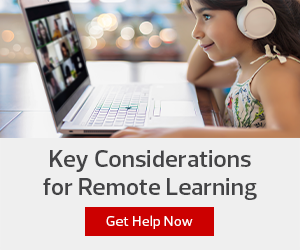Connectivity has been a hot issue as well, and Minneapolis stepped up to help schools deliver the broadband needed to keep students learning at home. Nybo’s office has served as an intermediary, negotiating for internet services in support of students learning at home.
“We brought together all the wired and mobile providers. We had Comcast and Sprint and Verizon at the table, along with our local provider. We said, ‘Here’s the problem. What can be done?’” Nybo says.
Some providers already had broadband offerings for families in need, “but those offers were not working for the community. The service wasn’t reaching the marginalized communities,” Nybo says. “A carrier might have translated materials, but they weren’t reaching the Hmong and Somali communities. We were able to step in and help with that.”
As the result of those discussions, the local provider, U.S. Internet, offered free internet for the school year for families who needed it. “The city was really the one who brought the situation to light,” Nybo says. “By working together, the city and the school district and the county were able to bring the problem to the providers — a problem they already knew about — and show how it had been amplified under COVID.”
EXPLORE: How are cities forging partnerships to close the digital divide?
Frederick County Provides Funding for Chromebooks
Meanwhile, in Maryland’s Frederick County, CIO Tom Dixon has likewise been working in support of his school district’s technology needs.
“During the pandemic, the Frederick County Public Schools IT organization has been stretched, trying to pivot to an online schooling situation,” he says.
To help remedy the situation, the county allocated an additional $2 million to the public schools. That money was largely earmarked for the purchase of Google Chromebooks, and the CIO’s office was instrumental in making those available at a time when devices were in short supply nationwide.
“Since it was county money being spent, my office coordinated the procurement. We dealt with CDW•G, we submitted the purchase order and made sure the order was delivered, and the Chromebooks went straight to the FCPS IT organization,” Dixon says.













